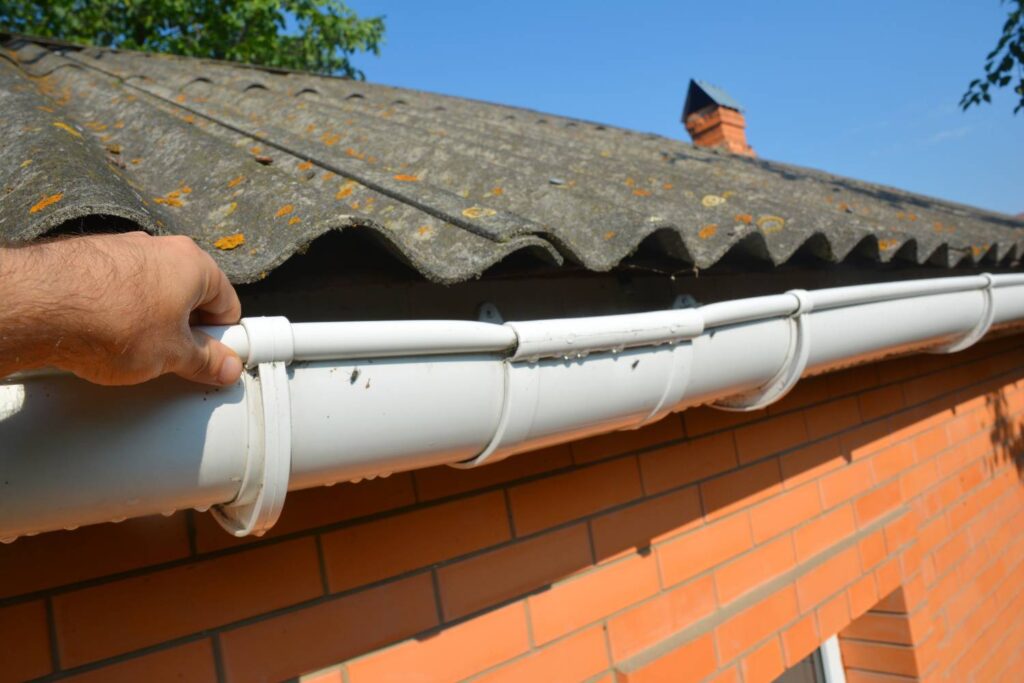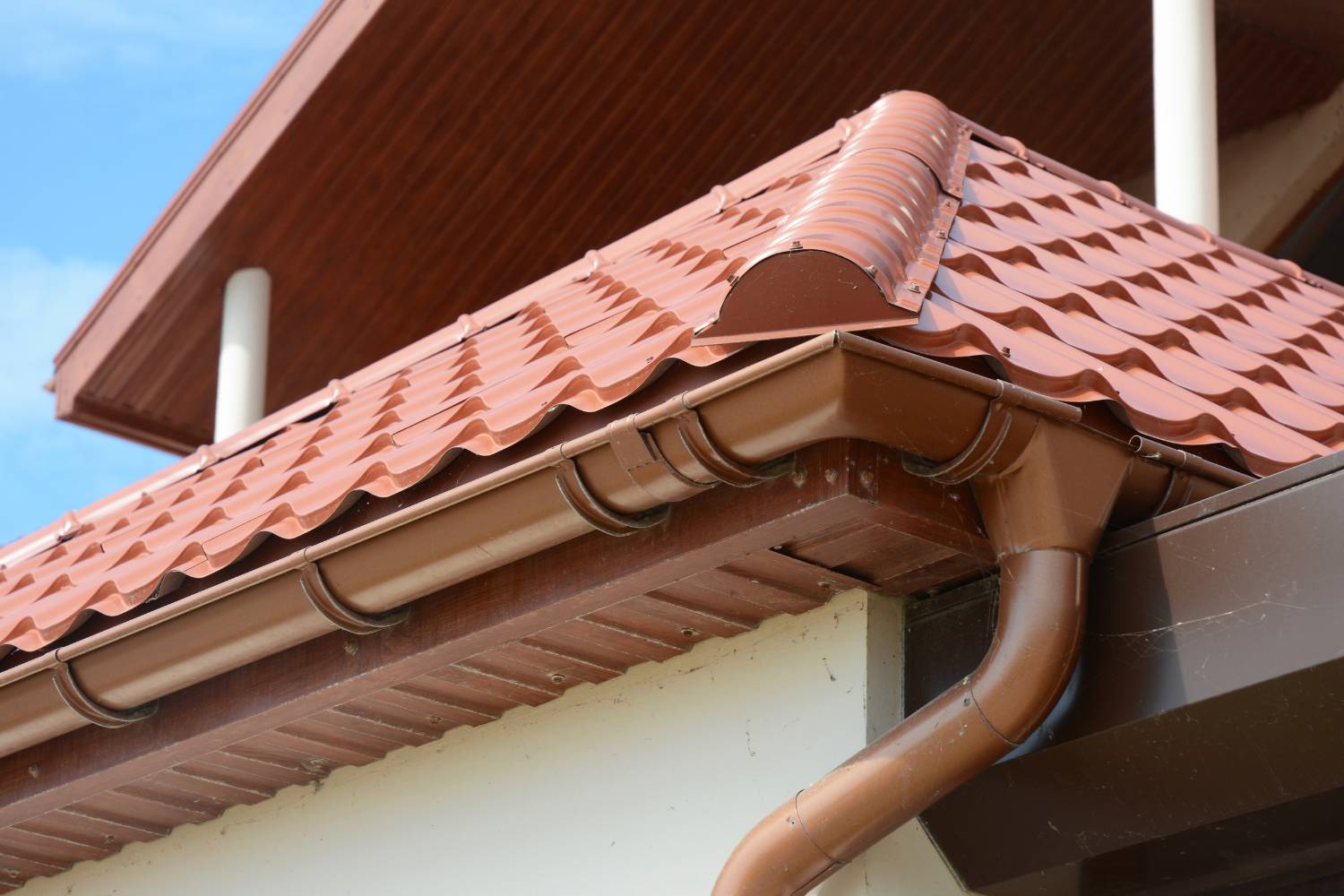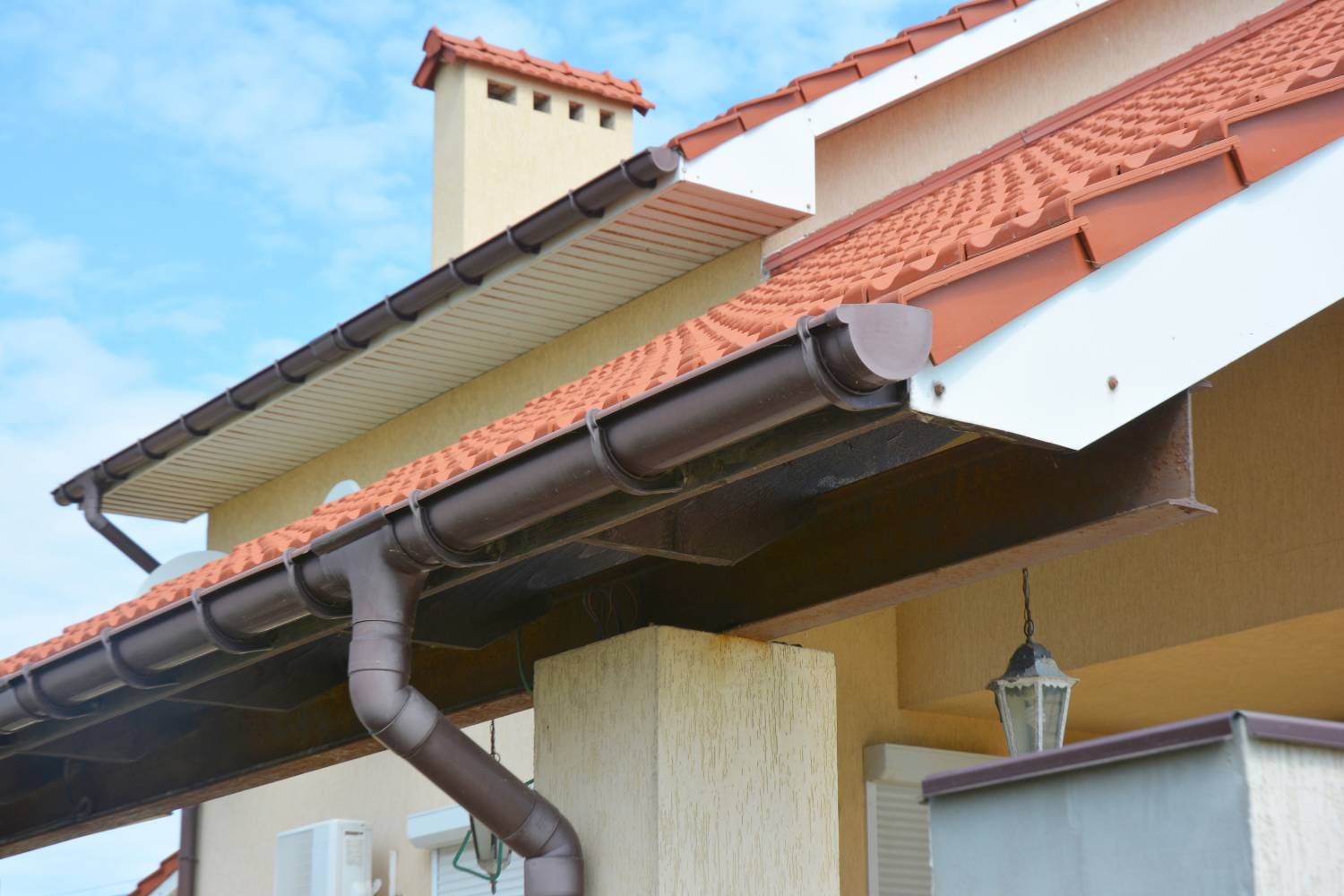Gutters play a crucial role in maintaining your home’s structural integrity by directing rainwater away from the roof, walls, and foundation. However, when gutters are neglected, they can cause a host of problems that may lead to costly repairs and damage.
In this blog, we will delve into the most common issues associated with guttering, including leaf and debris buildup, clogged downspouts, sagging gutters, leaks and holes, and overflowing gutters. Understanding these problems and how to address them can help you maintain a functional and efficient gutter system, ensuring the protection of your home.
How Does Leaf and Debris Buildup Affect Gutters?
Regular maintenance and cleaning of gutters are essential to prevent water damage, pest infestations, and mould growth. Utilising tools like gutter guards and professional services can help maintain clean gutters and protect your home.
Maintaining clean gutters is essential for protecting your home from water damage and ensuring efficient water drainage. Over time, leaves and debris can accumulate in gutters, leading to clogs and potential damage. This article explores the common types of debris found in gutters, the dangers of leaf buildup, and the best methods for removing and preventing such blockages.
Accumulated leaves in gutters can lead to several problems. One of the most serious is structural damage. When leaves block the flow of water, it can overflow and cause damage to the roof, fascia, and even the foundation of the house. Installing gutter guards can help prevent leaves from entering the gutters while still allowing water to flow through.
Leaf buildup can also lead to pest infestations. Wet, decomposing leaves attract pests such as mosquitoes, rodents, and insects. Keeping gutters clean and free of debris is crucial to preventing such infestations.
Additionally, blocked gutters create a moist environment ideal for mould and mildew growth, which can spread to the roof and walls of the house. Regular cleaning and ensuring proper water drainage can mitigate this risk.
Preventing Gutter Blockages
Preventing gutter blockages is key to maintaining the structural integrity of your home and avoiding the problems associated with leaf buildup. Installing gutter guards is a proactive measure that helps keep leaves out while allowing water to pass through. Regular maintenance, including trimming overhanging branches and scheduling professional cleanings, can also significantly reduce the risk of blockages.
Professional Gutter Cleaning Services
- Hiring a professional gutter cleaning service can save time and ensure thorough cleaning.
- Professionals use a combination of hand cleaning, pressure hoses, and vacuums to ensure gutters are completely free of debris.
- They also inspect for any potential issues, such as leaks or damage, and can perform necessary repairs.
How Can Clog Downspouts Damage Your Home?
Maintaining clean downspouts is crucial for preventing water damage and ensuring effective drainage around your home. Regular inspections, preventive measures like gutter guards, and timely cleaning can help keep your downspouts clear. For persistent or complex issues, professional cleaning services can provide thorough and safe solutions.
Investing in preventive measures and routine maintenance can save you from costly repairs and protect your home’s foundation from water damage.
Clogged downspouts can cause significant damage to your home by obstructing the proper drainage of rainwater. This blog provides an in-depth look at how to identify, prevent, and address clogged downspouts to maintain the integrity of your home’s drainage system.
How to Tell if Your Downspouts Are Clogged
Detecting a clogged downspout early can save you from extensive repairs. One clear sign is the absence of water flow after rainfall; if water isn’t exiting the downspout, a clog is likely present. Another indication is gutter overflow, where water spills over the sides of your gutters during rain, suggesting a blockage.
Leaking seams, where water sprays from gutter or downspout joints, can also signal a clog. Additionally, performing a hose test by running water through the downspout and experiencing a spray back confirms a blockage.
Simple Ways to Prevent Clogged Downspouts
Preventing clogs is more manageable and cost-effective than fixing them. Regular cleaning of gutters and downspouts at least twice a year is essential. This involves removing leaves, twigs, and debris by hand or with a small trowel. Installing gutter guards is another effective method. Gutter screens filter out debris while allowing water to pass through, though they require periodic cleaning.
Gutter inserts, made of foam, fill the gutter while letting water flow through and need regular cleaning. Reverse curves attach above the gutter, funnelling water in while deflecting debris. They require less maintenance but are more expensive. Lastly, trimming overhanging branches prevents leaves and twigs from falling into your gutters, reducing the risk of clogs.
What Causes Sagging Gutters and How Can You Fix Them?
Maintaining functional gutters is crucial for protecting your home from water damage. Regular cleaning, proper installation, and timely repairs can prevent and fix sagging gutters. Whether you choose to tackle the repairs yourself or hire a professional, addressing sagging gutters promptly will save you from more severe and costly damage in the long run.
Sagging gutters can cause significant damage to your home by preventing proper water drainage, which can lead to basement flooding, roof leaks, and foundation issues. Understanding the causes, preventive measures, and repair techniques for sagging gutters is essential for maintaining a functional drainage system. This blog explores these aspects in detail.
Causes of Sagging Gutters
Sagging gutters can be caused by several factors. One common reason is the buildup of debris. Leaves, twigs, and other materials can accumulate in the gutters, adding substantial weight and causing them to sag under the pressure. Another contributing factor is improper installation. If gutters are not installed with the correct slope or lack sufficient support, they are more likely to sag over time.
Weather conditions also play a significant role. Heavy rain, snow, and ice can add extra weight to the gutters, making them pull away from the fascia. Over time, the components of the gutter system, such as spikes, screws, and brackets, can deteriorate. This natural aging process can weaken the structure and lead to sagging.
Signs of Sagging Gutters
Recognising the early signs of sagging gutters can help prevent more extensive damage. One clear sign is visible sagging, where sections of the gutter appear bowed, cracked, or bent. During rainfall, if you notice water spilling over the sides of the gutters, it indicates that the gutters may not be functioning properly.
Pooling water around the foundation of your home is another indication that the gutters are not draining as they should. Additionally, if you see gutters pulling away from the roof or fascia, it is a clear sign of sagging.
Preventive Measures
To prevent gutter sagging, regular maintenance and proper installation are crucial. Regularly cleaning your gutters, at least twice a year, is essential to remove debris and prevent clogs. This cleaning routine should include clearing downspouts to ensure proper drainage. Ensuring that gutters are installed with the correct slope is also vital. A slope of at least one-quarter inch every ten feet helps facilitate water flow and prevent sagging.
Installing gutter guards can be an effective preventive measure. These guards help keep debris out, reducing the need for frequent cleaning and preventing weight buildup. Regularly inspecting your gutters for loose or damaged components and repairing them promptly is also important to maintain the integrity of the gutter system.
Professional Solutions for Sagging Gutters
For those who are uncomfortable with DIY repairs or dealing with severe damage, hiring a professional is advisable. Professionals can provide comprehensive solutions to address sagging gutters. They can repair or replace damaged sections and ensure proper installation.
Additionally, companies like LeafFilter, LeafGuard, and HomeCraft offer gutter guard systems that can prevent debris buildup and sagging, providing a long-term solution for maintaining healthy gutters.
What Causes Overflowing Gutters and How Can You Prevent It?
Overflowing gutters can cause extensive damage to your home, from foundation issues to mould growth. By understanding the causes and implementing regular maintenance and effective solutions, you can prevent these problems and protect your home.
Regular inspections, cleaning, and appropriate gutter systems are essential to ensure your gutters function correctly and manage water flow efficiently. If you encounter persistent issues, consider consulting a professional to assess and upgrade your gutter system.
Overflowing gutters are a common yet serious problem that can lead to significant damage to your home. This blog explores the causes, potential damage, and effective solutions for managing and preventing overflowing gutters.
Causes of Overflowing Gutters
Overflowing gutters can result from several underlying issues, each contributing to the ineffective management of rainwater. One of the primary causes is excessive rainwater during heavy storms.
When gutters are not designed to handle large volumes of water, they become overwhelmed, leading to water spilling over the edges. This problem is particularly common in regions with frequent heavy rainfall. Homes in such areas should consider installing larger gutters or splash guards to better manage the water flow.
Another common cause is clogged gutters and downspouts. Debris, such as leaves, twigs, and dirt, can accumulate, blocking the flow of water and causing it to back up and overflow. Regular cleaning and maintenance, along with the installation of gutter guards, can significantly reduce the risk of clogs and subsequent overflow.
Insufficient gutters and downspouts also contribute to this issue. Many older homes or those not designed with adequate drainage systems in mind often lack enough gutters or downspouts to handle the water volume, leading to overflows. Adding more gutters and downspouts can help distribute the water more evenly and prevent overflow.
The pitch or tilt of the gutters is another critical factor. Gutters need to be installed with a slight pitch to direct water towards the downspouts. If the pitch is incorrect, water can pool in the gutters and eventually overflow. Ensuring the gutters are installed with the correct pitch can facilitate proper water flow and minimise the risk of overflow.
Lastly, narrow gutters can be insufficient in areas with heavy rainfall. Standard-sized gutters may quickly become overwhelmed, causing water to spill over. In such cases, installing wider gutters can help manage the volume of water more effectively, preventing overflow.
Consequences of Overflowing Gutters
Overflowing gutters can have a range of detrimental effects on a home. One of the most severe consequences is foundation damage. When water overflows from gutters, it can erode the soil surrounding the foundation, potentially leading to cracks and structural instability. This erosion undermines the stability of the foundation, making the entire structure more vulnerable.
In addition to damaging the foundation, overflowing water can seep into the basement. This can result in flooding and significant water damage, creating an environment conducive to mould growth and further structural issues. The presence of water in the basement is not only a nuisance but can also lead to extensive and costly repairs.
The exterior of the house is also at risk. Continuous water overflow can cause the wooden eaves to rot and the siding to deteriorate. This kind of damage can be quite costly to repair and may require substantial work to restore the home’s exterior to its original condition.
The landscaping around the house is not spared from the effects of overflowing gutters either. Excess water can wash away soil, leading to landscape erosion and damage to plants and other elements of the garden. This erosion can alter the appearance of the yard and result in additional maintenance costs.
Moreover, persistent moisture problems caused by overflowing gutters can lead to mould and mildew growth on walls, both inside and outside the home. This growth can significantly affect indoor air quality, posing health risks to the inhabitants and necessitating expensive remediation efforts to ensure the home is safe and healthy to live in.
Overall, overflowing gutters can cause extensive and varied damage to a home, affecting its foundation, basement, exterior, landscaping, and indoor air quality. Regular maintenance and proper gutter management are essential to prevent these issues and protect the integrity and safety of the home.
Solutions for Overflowing Gutters
To address the issue of overflowing gutters, a comprehensive approach involving regular maintenance, proper installation, and timely repairs is essential.
First and foremost, regular cleaning and maintenance of gutters are crucial. Ideally, gutters should be cleaned at least twice a year to remove debris and prevent clogs. Utilising tools such as leaf blowers or simply cleaning them by hand when the roof is dry can ensure they remain clear and functional.
Installing gutter guards is another effective solution. These guards act as a barrier, preventing leaves and debris from entering the gutters while still allowing water to flow through. This not only reduces the frequency of necessary cleanings but also helps prevent clogs that can lead to overflow.
Ensuring that gutters have the correct pitch is also important. By using a level, one can check and adjust the pitch as needed. The hangers should be adjusted to maintain a slight slope towards the downspouts, facilitating proper water flow and reducing the risk of overflow.
In some cases, adding more gutters and downspouts might be necessary. This ensures that your home has adequate infrastructure to handle the volume of water, especially during heavy rainfall. Larger or additional downspouts can help distribute the water more efficiently, preventing overloading of any single gutter system.
For homes located in areas with frequent heavy rain, installing wider gutters can be a beneficial upgrade. Wider gutters can handle a larger volume of water, significantly reducing the likelihood of overflow during intense storms.
Lastly, regular inspection and repair of the gutter system are essential for maintaining optimal performance. Inspect gutters periodically for signs of damage or wear and promptly repair any loose or damaged sections to ensure the system remains functional and effective.
By implementing these solutions, you can significantly reduce the risk of overflowing gutters, protecting your home from potential water damage.
Conclusion
Maintaining your gutter system is vital for the protection and longevity of your home. Common gutter issues such as leaf and debris buildup, clogged downspouts, sagging gutters, leaks and holes, and overflowing gutters can lead to significant damage if not addressed promptly. By understanding these problems and implementing regular maintenance routines, you can ensure efficient water drainage and prevent costly repairs.
Regular cleaning, proper installation, and the use of preventive measures like gutter guards are essential for keeping your gutters in top condition. For complex issues or when in doubt, hiring professional services can provide thorough and safe solutions.
Taking proactive steps in maintaining your gutters not only protects your home from water damage but also enhances its overall value and curb appeal. Remember, a well-maintained gutter system is a crucial component in safeguarding your home’s structural integrity and ensuring a healthy living environment.
Frequently Asked Questions
Gutters often clog due to the accumulation of leaves, twigs, dirt, and other debris. `To prevent clogs, regular cleaning is essential. Installing gutter guards can also help by keeping larger debris out while allowing water to flow through.
Signs of a clogged downspout include no water flow from the downspout after rainfall, water spilling over the sides of the gutters, and water spritzing from gutter or downspout joints. Running water through the downspout with a garden hose can help identify blockages.
Sagging gutters can be caused by debris buildup, improper installation, or weather damage. To fix sagging gutters, clean them regularly, adjust the slope if necessary, and reinforce support by tightening screws and adding brackets or straps. Professional assistance may be needed for severe sagging.
To repair leaks and holes, first clean the area around the hole. Apply roofing cement around the hole and press a metal patch over it, then smooth the edges with more roofing cement. For leaky joints, clean the joint area and apply gutter sealant inside the joint, pressing the sections together. Secure the joint with screws or rivets if necessary.
Overflowing gutters can cause foundation damage, basement flooding, and mould growth. Prevent overflow by regularly cleaning gutters, installing gutter guards, checking and adjusting gutter pitch, and ensuring your home has enough gutters and downspouts to handle heavy rainfall. Consider installing wider gutters in areas with frequent heavy rain.


